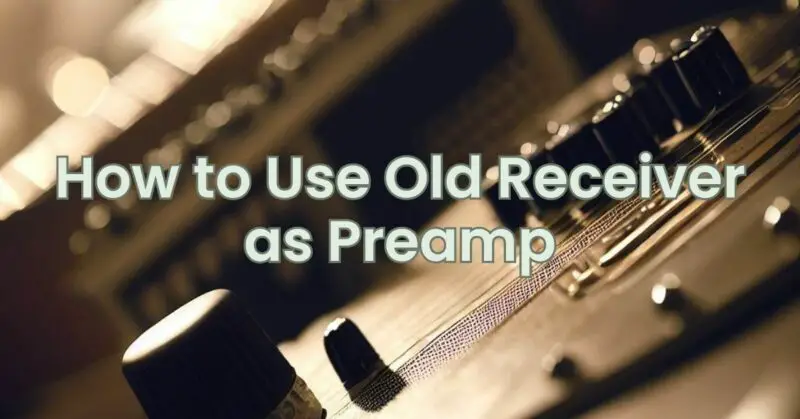Technology evolves rapidly, and what was once cutting-edge audio equipment can eventually become outdated. If you have an old receiver lying around that is no longer suitable for driving speakers, don’t discard it just yet! With a little creativity and know-how, you can repurpose your old receiver as a preamplifier, breathing new life into your audio setup. In this article, we will guide you through the process of using an old receiver as a preamp, enabling you to enhance your audio experience without breaking the bank.
Step 1: Assessing the Capabilities of Your Old Receiver:
Before repurposing your old receiver, it’s essential to understand its features and limitations. Check the inputs and outputs available on the receiver to ensure compatibility with your current audio sources and power amplifier. Look for preamp outputs or a “line-out” option, as these are crucial for connecting your receiver to the power amplifier or active speakers.
Step 2: Preparing the Connections:
To use your old receiver as a preamp, you’ll need to connect it to a power amplifier or active speakers. Follow these steps:
- Locate the preamp outputs or line-out connections on your old receiver. These are typically labeled as “Pre Out,” “Main Out,” or “Line Out.”
- Using RCA cables, connect the preamp outputs of your old receiver to the inputs of your power amplifier or active speakers. Ensure that you match the left and right channels correctly.
- If your power amplifier or active speakers have balanced XLR inputs, you can use XLR cables for improved signal integrity.
- Once the connections are made, ensure that all devices are powered off before proceeding to the next step.
Step 3: Configuring the System:
After the physical connections are established, it’s time to configure your system:
- Power on your old receiver, power amplifier, and any connected speakers.
- Access the settings menu on your old receiver. Look for options related to speaker configuration, volume control, and source selection. Disable any unnecessary features like tone controls or loudness enhancement to maintain a clean and transparent audio signal.
- Set the volume level on your old receiver to an appropriate level, usually around 50% or lower. This will ensure that the preamp output is optimized and avoids clipping or distortion.
- Select the desired audio source on your old receiver, such as a CD player, turntable, or streaming device.
Step 4: Fine-tuning and Troubleshooting:
Once your system is configured, it’s time to fine-tune and troubleshoot if necessary:
- Check the connections to ensure they are secure and free from any interference.
- Listen for any unusual noises or distortion. If you encounter any issues, double-check the connections and ensure that all devices are properly grounded.
- Adjust the volume levels on your old receiver and power amplifier to achieve the desired sound balance. Remember that the old receiver will now act solely as a preamp, so most of the audio control will be done through the power amplifier or active speakers.
- Experiment with different audio sources and settings to find the optimal configuration for your listening preferences.
Conclusion:
Repurposing an old receiver as a preamp is an excellent way to extend the life of your audio equipment while upgrading your audio setup. By following the steps outlined in this article, you can utilize the preamp capabilities of your old receiver, enabling you to control audio sources, adjust volume levels, and fine-tune your sound. This cost-effective solution not only breathes new life into your old receiver but also opens up possibilities for enhancing your overall audio experience. Don’t let your old receiver gather dust—unleash its hidden potential as a preamp and rediscover the joy of high-quality audio.

